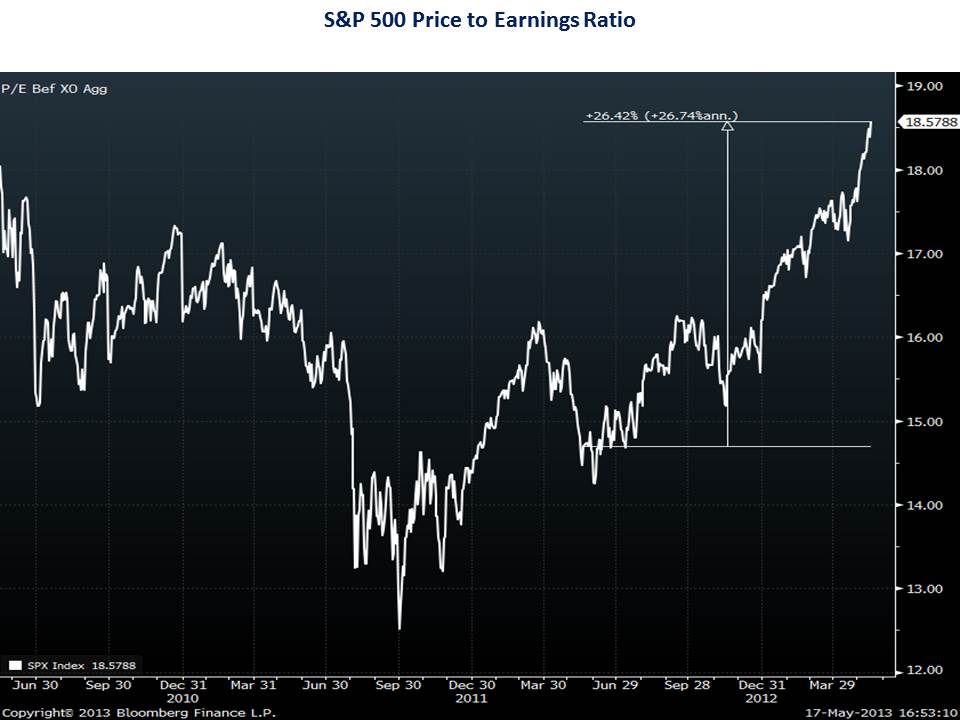The relentless rise in the U.S. stock market over recent months has emboldened the perma-bulls. The business news cable networks are parading out this crowd in all of their glory to gloat over the market’s rise.[expand title=”Click here to read more.”]Never mind that many of these pundits are the very same cheerleaders who led investors astray right before the last two stock market collapses. True to their colors, the perma-bulls are as exuberant as ever—yes even after a 140%+ rise off the 2009 low. Before the last crash we were hearing some of the same hollow arguments that we hear today. Stocks are cheap when compared to bonds. Yup, that may be, but it is also true that bonds have never been more expensive.
We are also hearing that the most recent leg of this bull market is about more than just central bank money printing. Really? Since last May the S&P 500 has risen 27% and the price-to-earnings ratio of the index has risen 26.4%.
The price to earnings ratio is just the amount an investor must pay to buy $1 of corporate earnings. So when the PE ratio rises investors must pay more for the same $1 of earnings. When you pay a higher price for the same good or service economists call that inflation. The same is true in asset markets. Paying more for the same stream of corporate profits is asset inflation.
What causes inflation? Too much money chasing too few goods. What causes asset inflation? You guessed it, too much money chasing too few assets. The Federal Reserve and the Bank of Japan are flooding the global financial system with $150 billion per month in freshly printed money. There is too much money (or liquidity) chasing too few assets. As a result, asset prices are rising even though there hasn’t been a corresponding improvement in fundamentals.
The disconnect between prices and fundamentals may continue for a time (we can’t forecast for how long), but ultimately there must be a resolution. The best case scenario is for the fundamentals to catch up to prices. But for much slower moving fundamentals to catch up to prices, stock market appreciation is going to have to slow sharply. That means low single-digit medium-term returns in the stock market. If the divergence isn’t resolved through the best case scenario, the most probable outcome is a painful correction in stock prices.
The bottom line is that if you are an investor as opposed to a trader, momentum chaser, or speculator (the other 90% of market participants) it is time to start lowering your long-run return expectations.[/expand]

